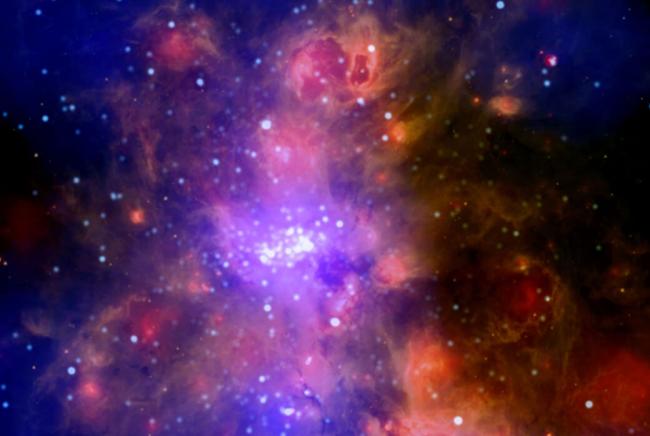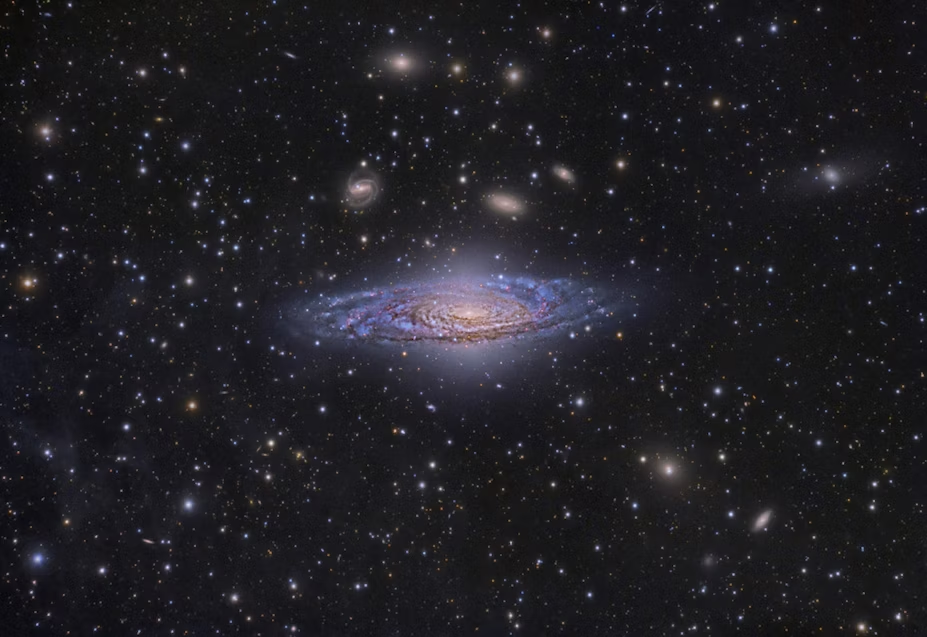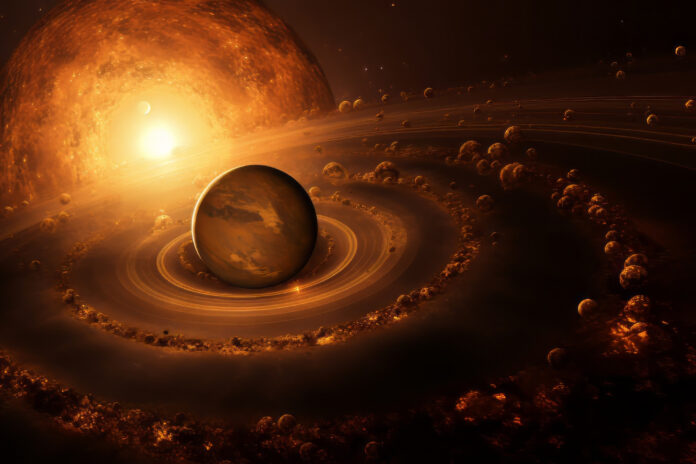Have you ever looked up at the night sky and wondered how those twinkling lights came to be?, how planets are formed? Are Earth and our neighboring planets unique, or could there be other worlds teeming with life? i don’t know of you guys but i have thought of this for a while and i finally decided to do some research and share my findings. Turns out, planets – from familiar rocky spheres to gas giants unlike anything in our solar system – go through a remarkable journey of birth and transformation.
Building Blocks of Planets
Every planet, from our familiar Earth to the most bizarre worlds across the galaxy, started with the same basic ingredients. To understand the incredible diversity of planets, we need to look into the fundamental building blocks that shape their existence.
The Protoplanetary Disk: A Planet’s Nursery
Planets don’t just form in any environment in space, from studies a suitable environment is after a star is formed. The birth of a star is a messy process, leaving behind a swirling disk of gas and dust remnants. This disk, known as a protoplanetary disk, isn’t just cosmic leftovers – it’s the birthplace of planets. Within this spinning cradle, the ingredients for future worlds begin to take shape.
Think about it: somewhere, right this second, a newborn star is emerging, pushing back against its birthplace. Leftover debris from that cataclysmic birth is starting to clump together, laying the foundation for future worlds. It’s a process that played out in our own solar system eons ago, and it never ceases to amaze me.
Accretion: The Growth Process
Let’s zoom in on those tiny dust particles within the disk. They’re constantly in motion, colliding and sometimes sticking together. This process of accretion is the cornerstone of planet formation. Imagine it like a snowball rolling downhill, picking up more snow and getting larger with each turn.
Over millions of years, this cosmic snowball effect continues. Dust grains become pebbles, pebbles collide into larger rocks, and eventually, massive objects called planetesimals emerge. These planetesimals, through further collisions and mergers, will form the planetary embryos that give rise to the planets we know (and those we’ve yet to discover).

Types of Planets and How They Form
The process of planet formation within the protoplanetary disk isn’t uniform, leading to a remarkable variety of worlds. Let’s examine the formation of the two main categories: rocky planets and gas giants.
Rocky Planets: Forged in the Inner Fires
- Location Matters: Rocky planets like Earth and Mars form closer to their parent star, where temperatures are too high for volatile materials like water or methane to condense into solids. Instead, rocky planets are built primarily from metals and silicates that can withstand the intense heat.
- Core Formation (Differentiation): As a rocky planet accretes material, the heavier elements like iron and nickel sink towards the center under the influence of gravity. This process, called differentiation, creates a dense metallic core while lighter silicates form the mantle and crust.
- Limited Growth: Rocky planets tend to be smaller in size compared to gas giants. The amount of solid building material available in the inner disk is less, and their weaker gravity makes it challenging to hold onto a thick gas atmosphere.
Gas Giants: Born in the Outer Realm
- The Ice Advantage: In the cold outer regions of the protoplanetary disk, volatile compounds like water, methane, and ammonia exist as solids. This significantly increases the amount of material available for building planets, leading to the formation of gas giants like Jupiter and Saturn.
- Runaway Accretion: A gas giant begins as a large, icy-rocky core. Once this core reaches a critical mass, its gravity becomes strong enough to rapidly accrete massive amounts of hydrogen and helium gas from the surrounding disk.
- Multiple Cores? Some models of gas giant formation suggest they may not have a single solid core. Instead, they could possess multiple smaller cores that formed in a more distributed way. This is still an active area of research.
Factors Affecting Composition
- Temperature Gradient: The primary factor determining a planet’s ingredients is its location within the disk and the prevailing temperatures.
- Disk’s Composition: The abundance of various elements within the initial protoplanetary disk, influenced by the parent star’s formation, also plays a role. A disk rich in heavy elements could lead to planets with a slightly different composition than one lacking such materials.
- Timing Matters: The speed at which a planet forms is crucial. If a gas giant core forms quickly in the outer disk while significant gas is still present, it can become very massive. If it forms after much of the gas has dissipated, it would remain a smaller gas giant.
Here’s a vidoe of how planets are formed:
A Planet’s Life: Evolution and Change
A planet’s birth is just the beginning of its journey. Over vast timescales, internal and external forces shape and reshape worlds, leaving traces of their dynamic histories on and below their surfaces.
Internal Heat and Differentiation
Planets don’t simply cool down after they form. Leftover heat from the accretion process combined with the ongoing decay of radioactive elements in their interiors keep them surprisingly warm. This heat creates a molten inner realm, especially in younger planets. As with rocky planets during their formation, denser materials sink towards the center, forming a core, while lighter materials rise to form a mantle and eventually, a solid crust.
Volcanism and Tectonics
The internal heat of a planet needs an escape route. Volcanoes act as pressure valves, releasing molten rock (lava), gases, and ash from the interior. Over time, repeated eruptions build spectacular mountains and vast lava plains. Additionally, some planets, including Earth, experience plate tectonics – the movement and recycling of their outer crust driven by the churning mantle below. This creates mountain ranges, ocean basins, and triggers powerful earthquakes.
ALSO READ: Exploring the Order of Planets in the Solar System
Atmospheres: Key to Life?
While some planets form with a primordial atmosphere captured from the protoplanetary disk, most atmospheres have a more complex origin. Volcanic outgassing releases trapped gases like water vapor, carbon dioxide, and nitrogen into the atmosphere. Icier comets and asteroids crashing into the young planet can also contribute to this process. However, atmospheres are constantly evolving. Lighter gases can escape into space, especially for planets with low gravity. The solar wind – a stream of charged particles from the star – gradually strips away a planet’s atmosphere over time. Additionally, internal processes like volcanism and the presence of life can further alter the composition of an atmosphere.
The Goldilocks Zone: Concept of the habitable zone
The Habitable Zone, also known as the Goldilocks Zone, is the region around a star where the temperature is just right for liquid water to potentially exist on a planet’s surface. Water is considered vital for life as we know it. A planet’s position within this zone depends on the size and temperature of its star. However, being in the Habitable Zone alone doesn’t guarantee a planet is habitable or capable of supporting life. Atmospheric composition, geological activity, and many other factors play a crucial role.
Beyond Our Solar System: The Weird and Wonderful

The discovery of planets orbiting stars beyond our Sun (exoplanets) has revolutionized our understanding of how planets are formed and the sheer diversity of worlds that populate the galaxy. From scorching giants to enigmatic free-floaters, exoplanets constantly push the boundaries of our imagination.
Exoplanet Discoveries: A Sampling of the Extremes
- Hot Jupiters: Gas giants inexplicably orbiting incredibly close to their stars, where temperatures are scorching. These were some of the earliest exoplanets found, and they challenged planet formation models.
- Super-Earths: Rocky planets that lie in a size range between Earth and Neptune. These are incredibly common, yet we have no analog in our own solar system, raising questions about their potential composition and whether they could be scaled-up versions of familiar Earth.
- Rogue Planets: Imagine planets not bound to any star, adrift in the darkness of interstellar space. Some theories suggest they may form like stars, or be violently ejected from young solar systems. They might harbor internal heat, potentially allowing for unusual subsurface ecosystems.
Habitability Factors: Beyond the Goldilocks Zone
The search for planets capable of supporting life often focuses on those within the habitable zone, where liquid water could exist on the surface. However, exoplanet discoveries force us to expand our thinking. Here’s why:
- Tidal Heating: Moons around gas giants in frigid regions could experience extreme internal heating due to gravitational flexing from their parent planets. This could create subsurface oceans even far from a star’s warmth.
- Thick Atmospheres: Some super-Earths may hold onto dense atmospheres that trap enough heat to make their surfaces habitable, even if they aren’t strictly within the star’s habitable zone.
- Alternative “Solvents”: Life as we know it requires liquid water. But could other liquids in extreme environments, like liquid methane on Saturn’s moon Titan, potentially support unfamiliar forms of biochemistry?
Conclusion
From swirling cosmic disks to the incredible diversity of worlds we observe, the story of planet formation and evolution is awe-inspiring. Beginning with grains of dust in the space around a young star, gravity and complex forces mold planets. Some become rocky terrestrial worlds, others immense gas giants. Volcanoes, tectonics, and the dance of atmospheres shape their surfaces and hint at their internal dynamism.
So there you have it – a tiny glimpse into the amazing story of how planets are formed. The more we discover about the birth of stars and planets, the more I become convinced of life’s potential beyond our tiny blue marble. The thought of a distant disk of dust harboring the right ingredients, bathed in the light of a young star… it hints at the possibility of prebiotic chemistry, the foundation of life, unfolding somewhere as we speak.
If you’re fascinated by the story of planets, stay curious! Follow the latest discoveries and news about space in this blog. This blog is my little corner of the universe to share these thoughts that never cease to inspire me. I hope you’ll join in on the wonder! Share your thoughts in the comment section and see you later in my next blogpost.
